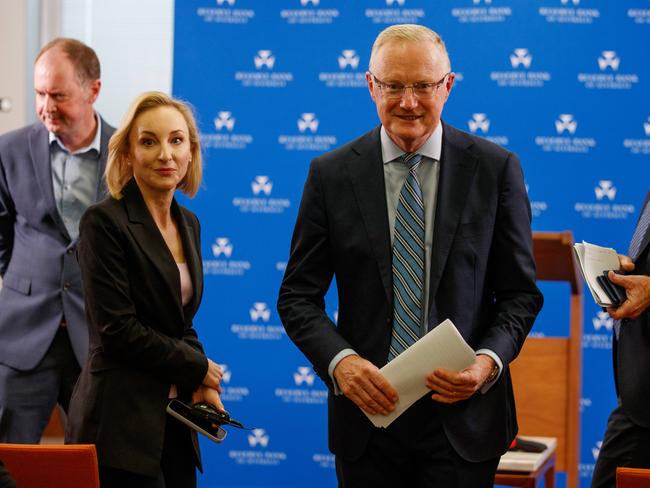
Yet our sharemarket follows Wall Street where the 10-year bond market is now sending an ominous signal for all those Down Under.
Unlike almost all other developed countries, Australia has a mortgage market that is based on floating interest rates.
During the pandemic, more householders than usual fixed their mortgages, but we are now rapidly reverting to our normal pattern as these fixed interest rate loans expire.
That means the Reserve Bank is delivering a two-pronged attack on the Australian economy and its non-affluent consumers.
The first is the impact of the higher interest rates on existing floating rate mortgages, which the CBA’s Gareth Aird describes as “incredibly aggressive”.
He warns that only about half of the RBA’s already delivered rate hikes have hit home borrower’s cash flow, so the direct consumer cash flow impact has a long way to go.
Adding to those blows will be the conversion of the massive number of low fixed rate loans to current interest rate levels.
Accordingly, there is a lot of tightening still to come, regardless of how much higher the RBA takes the cash rate.
So far, wages growth in Australia has not risen at the same rate as North America and some European countries.
But Australia has elected a government that is dedicated to wage rises, particularly in the public sector, and to lower productivity via its industrial relations proposals.
And so under central bank criteria (of course not in official statements) our society must be delivered more pain to force Canberra to wake up.
The US with fixed rate mortgages is not being inflicted with anything like the consumer cash flow blows, although its interest rates are higher than Australia.

The US is leading the world in a massive program to develop technology to lift productivity as part of the electrification revolution.
The outlays are huge and will almost certainly cause US interest rates to stay higher than might have being seen in previous central bank driven interest rate rises.
And so when the higher US official interest rates began to slow economic activity, short-term US rates remained high, but the 10-year bond rate fell from around 4 per cent to 3.3 per cent.
But when markets looked at the total picture including electrification expenditure, the 10-year bond rate climbed back to 3.8 per cent which sends a chilling message to Australia – while our economic downturn will relieve pressure on interest rates, the US and Australian expenditures on electrification will lessen later rate reductions and may cause surprise increases.
Commodities being used for electrification will have strong demand, and their higher prices will underpin inflationary levels.
In theory, the switch away from carbon energy should impact the oil price. But what is happening in the oil markets is remarkable.
The long-term electrification threat plus the vibrations from the war in Ukraine have reunited the OPEC countries, and this week’s reduction in supplies was achieved with remarkable unanimity.
Meanwhile, the Middle East has taken over from Russia as the main supply of oil to Europe and Russia has replaced much of the Middle Eastern supplies to Asia, particularly China and India.
But Russian oil is discounted, so this is helping keep the lid on Chinese inflation.
China knows it must stimulate its economy because China’s US markets are among those being impacted by the higher interest rates, and it is only a token share of the big expenditures in electrification and technology.
During recent years, revenue boosts were spread over most companies but in the current environment there will be big winners but also big losers which will keep those managing share portfolios on their toes.







No other country in the world is battling with the same challenges facing Australia.